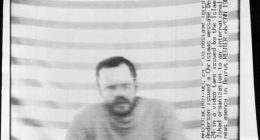Bryn Mooser, CEO and founder of nonfiction entertainment studio XTR, says he wants to see more production on L.A.’s Eastside, a historic area for movie filming.
“Echo Park in particular is sort of where the center of the creative community is, especially for documentary filmmakers,” says the Oscar-nominated producer (Lifeboat, Body Team 12). “The neighborhood used to be called Edendale, and that’s where the first Hollywood studios were. Charlie Chaplin’s studio, the Keystone Studios, Mary Pickford, everybody was here. The first talkie was filmed probably a mile or so away. So there’s this history of making things here, which is really exciting.”
That’s what drew Mooser, a fifth-generation Angeleno, to open XTR’s new 35,000-square-foot production facility and headquarters on a cul-de-sac in Echo Park (in the former home of BelleVarado Studios). The studio, established in 2019 and previously located in a warehouse loft on Sunset Boulevard, recently opened its doors in a Spanish Mission Revival-style building decorated with vintage wood tables and salvage-yard doors embedded with stained glass windows that Mooser himself found and cut to fit. Every corner of the campus feels human and organic, never manufactured or emptily curated, which is ultimately a fitting rendering of a sanctuary for documentary filmmaking focused on real life.

XTR produces, distributes and finances documentary films, series and podcasts. They Call Me Magic, the Apple TV+ docuseries on Magic Johnson; MTV Documentary Films’ Oscar-nominated Ascension; Menudo: Forever Young on HBO Max; The Territory from National Geographic, and the Emmy- and Peabody-award-winning 76 Days make up some of the company’s roster of more than 80 docs. I Didn’t See You There, a feature about living with disability that received the award for documentary directing at Sundance this year, is rolling out in theaters in early October.
Mooser recalls his first job in the entertainment industry working on the Fox lot for NYPD Blue, and how that became a template for the type of work environment he wanted to establish in XTR Studios’ new home, which includes work and meeting spaces, a soundstage, recording studio, along with production and post-production facilities.
“I think that that experience where you walk in and you can feel an energy that people are making things is what got me so excited about being in the entertainment industry. It’s something that I’ve always wanted to get back to,” Mooser muses. “I want this space to be a place where creatives can come and it can help take barriers of entry down for people to make stuff.”

XTR’s new home includes work and meeting spaces, a soundstage, recording studio, and production and postproduction facilities. The 45-person company currently has approximately 25 film and television projects in production. Beyond that, operations for XTR’s Documentary+, a free streaming platform for nonfiction film and TV that launched in 2021, are also contained within the arched hallways of the workspace.
“We created it to provide a platform for passionate nonfiction fans out there. We initially started with an on-demand sort of aspect, where we’re on the web, we’re available as an app on iOS TV, Roku, et cetera. Then we launched as a fast channel, and we’re now in 85 percent of connected televisions in the US, and we are available around the world,” Justin Lacob, head of development and production at XTR and co-founder of Doc+, says. “It really is a place for people to watch documentaries for free, anywhere and everywhere.”
Available in over 80 million households in the U.S. alone, a large portion of Documentary+’s original content will be made onsite on XTR’s soundstage, which can do full virtual production, allowing them to create documentaries at cost – whether the film calls for sit down interviews or atmospheric recreations in a controlled setting.
“We aren’t trying to compete with Netflix but we’re a value add,” Lacob says of the platform, which features a blend of feature-length and short-form titles from both notable directors and filmmakers on the rise. “A lot of our docs on Doc+ aren’t available anywhere else so we’re operating in our own lane in the streaming wars.”

XTR is also making its studio facilities available for rental by other companies’ productions, nonfiction or commercial. “I want this space to be a place where creatives can come and it can help take barriers of entry down for people to make stuff,” says Mooser. Given the new and larger documentary audiences cultivated because of the greater accessibility streaming platforms provide, Mooser expects the space to be in demand. “The genre was never able to really reach mass audiences because it was limited to film festivals, or just a few theaters that would play documentaries. But now they can trend in the same ways [as narrative features]. What that means is that not only do you have new audiences, which of course creates new business, but you also have those audiences who are getting exposed to documentaries for the first time, and wanting to become creators themselves. So there’s this whole new class of filmmakers, who have a totally different perspective and background than who’s been making documentaries historically for a long time. It’s within the fabric of that backdrop where you have new audiences, new filmmakers, and a thriving business, that I think there’s an opportunity to build a studio, hopefully at the center of that, that is built for this moment, and not built for the past.”
Part of Mooser’s vision with building the studio hinges on collaboration and creative inspiration as necessary parts of the storytelling process. By having post-production in-house, editors are able to collide and exchange the energy of ideas – like when atoms and their waveforms overlap in close proximity — in a comfortable setting. Having this as a priority is one element that makes XTR Studios unique in the industry; another is the company’s focus on working with a range of filmmakers (thanks in large part to the discernment of XTR’s head of film Kathryn Everett).
“Historically, documentary studios have been focused on a documentary filmmaker, you know? Like, one guy. And it’s just that director’s singular vision,” Mooser says. “What was important to us was that we would build something that didn’t have one voice at the center of it, and that we really worked with a lot of filmmakers.”
This story first appeared in the Sept. 28 issue of The Hollywood Reporter magazine. Click here to subscribe.
Read More: World News | Entertainment News | Celeb News
Hollywood




